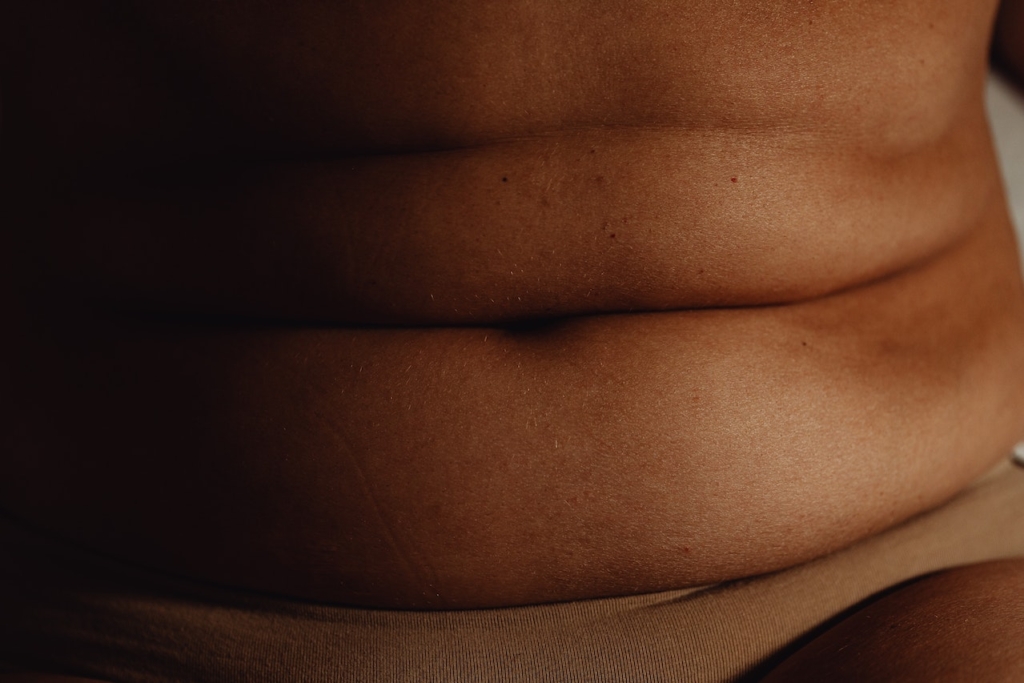Tummy tuck, also known as abdominoplasty, is a cosmetic surgery that removes excess skin and fat from the abdominal area. It is a popular procedure among people who have lost a significant amount of weight or women who have had multiple pregnancies. However, one of the most common questions people ask before considering this surgery is, “how much does a tummy tuck cost?”
The cost of a tummy tuck varies depending on several factors, including the surgeon’s fee, the geographical location, and the type of procedure. Generally, the cost ranges from $3,000 to $12,000, with an average cost of $6,000. However, it is important to note that the cost does not include additional expenses such as anesthesia fees, hospital or surgical facility costs, and post-surgery garments.
Understanding the cost of a tummy tuck is important for anyone considering this procedure. In this article, we will explore the different types of tummy tuck procedures, the factors that affect the cost, and whether insurance covers the cost of the surgery. We will also discuss the risks and complications associated with the surgery, as well as the recovery process.
Understanding Tummy Tuck
Tummy tuck, also known as abdominoplasty, is a surgical procedure that removes excess skin and fat from the abdominal area, and tightens the muscles to create a flatter and firmer abdomen. It is often performed as part of body contouring procedures after significant weight loss or pregnancy.
The cost of a tummy tuck varies depending on several factors, including the surgeon’s experience, the extent of the procedure, and the location of the practice. In general, the cost of a tummy tuck in the United States can range from $6,000 to $12,000.
During the tummy tuck procedure, the surgeon will make an incision along the lower abdomen, remove excess skin and fat, and tighten the abdominal muscles. The incision is then closed with sutures, and a compression garment is placed over the area to reduce swelling and support the healing process.
Recovery from a tummy tuck typically takes several weeks, during which time patients are advised to avoid strenuous physical activity and wear the compression garment as directed. Pain and discomfort can be managed with medication prescribed by the surgeon.
It is important to note that a tummy tuck is not a weight loss procedure and should not be used as a substitute for a healthy diet and exercise. Candidates for a tummy tuck should be in good overall health, have realistic expectations for the outcome of the procedure, and be committed to maintaining a healthy lifestyle after the surgery.
Types of Tummy Tuck Procedures
When it comes to tummy tuck procedures, there are different types available to patients. The two most common types of tummy tuck procedures are the full tummy tuck and the mini tummy tuck.
Full Tummy Tuck
The full tummy tuck, also known as an abdominoplasty, is the most common type of tummy tuck procedure. This procedure is ideal for individuals who have excess skin and fat in the abdominal area. During a full tummy tuck, the surgeon makes a horizontal incision from hip bone to hip bone and a vertical incision from the belly button to the pubic area. The surgeon then removes excess skin and fat and tightens the abdominal muscles.
A full tummy tuck is a major surgical procedure that requires general anesthesia and can take up to four hours to complete. Recovery time can take up to six weeks, and patients are advised to avoid strenuous activity during this time.
Mini Tummy Tuck
The mini tummy tuck is a less invasive procedure than the full tummy tuck and is ideal for individuals who have excess skin and fat in the lower abdominal area. During a mini tummy tuck, the surgeon makes a small incision in the lower abdominal area and removes excess skin and fat. The surgeon may also tighten the abdominal muscles if necessary.
A mini tummy tuck is a minor surgical procedure that can be performed under local anesthesia. Recovery time is significantly shorter than a full tummy tuck, and patients can return to normal activity within a few days.
When considering a tummy tuck procedure, it is important to consult with a qualified surgeon to determine which type of tummy tuck is right for you. The cost of a tummy tuck can vary depending on the type of procedure and the surgeon’s experience.
The Tummy Tuck Procedure
A tummy tuck, also known as abdominoplasty, is a surgical procedure that removes excess skin and fat from the abdominal area. This procedure is typically performed by a board-certified plastic surgeon under general anesthesia in a hospital or surgical center.
During the procedure, the surgeon will make an incision in the lower abdomen, typically just above the pubic area. The length of the incision will depend on the amount of skin that needs to be removed. The surgeon will then lift the skin and fat from the abdominal wall and repair any separated or weakened muscles.
Once the muscles have been repaired, the surgeon will remove any excess skin and fat and reposition the remaining skin to create a more toned and contoured appearance. In some cases, the surgeon may also reposition the belly button to a more natural-looking location.
After the procedure, the incision will be closed with sutures and a compression garment will be placed over the treated area to help reduce swelling and promote healing.
It is important to note that while a tummy tuck can provide dramatic results, it is not a substitute for weight loss or a healthy lifestyle. Patients should maintain a healthy diet and exercise routine to ensure long-lasting results. Additionally, it is important to choose a qualified plastic surgeon who has experience performing tummy tucks to ensure a safe and successful outcome.
Cost of Tummy Tuck
The cost of a tummy tuck can vary greatly depending on several factors, including the surgeon’s expertise, the location of the practice, and the extent of the procedure. In general, the cost of a tummy tuck ranges from $3,000 to $12,000, with an average cost of around $6,000.
The cost of a tummy tuck typically includes the surgeon’s fee, the facility fee, and the anesthesiologist’s fee. Some surgeons may also charge a separate consultation fee. It is important to note that the cost of a tummy tuck does not include any related expenses, such as prescription medications or post-operative garments.
When considering the cost of a tummy tuck, it is important to choose a qualified and experienced surgeon. While a lower cost may be tempting, it is important to prioritize safety and quality of care. Patients should also research financing options and discuss payment plans with their surgeon.
In conclusion, the cost of a tummy tuck can vary greatly depending on several factors. Patients should carefully consider their options and prioritize safety and quality of care when choosing a surgeon.
Factors Affecting Tummy Tuck Cost
The cost of a tummy tuck procedure varies depending on several factors. Here are the main factors that affect the cost of a tummy tuck:
1. City and State
The cost of a tummy tuck can vary depending on the location of the provider. The cost of living and the demand for plastic surgery in a particular city or state can affect the price of the procedure.
2. Experience of the Surgeon
The experience of the surgeon can also affect the cost of a tummy tuck. A board-certified plastic surgeon with years of experience may charge more than a less experienced surgeon.
3. Type of Tummy Tuck
The type of tummy tuck performed can also affect the cost of the procedure. A mini tummy tuck, which involves a smaller incision and less extensive surgery, may cost less than a full tummy tuck.
4. Additional Procedures
If additional procedures are performed along with the tummy tuck, such as liposuction or breast augmentation, the cost of the overall procedure will increase.
5. Facility Fees
Facility fees, which cover the cost of using the operating room and other medical equipment, can also affect the cost of a tummy tuck.
Overall, the cost of a tummy tuck can range from $3,000 to $12,000 or more, depending on the factors mentioned above. It is important to consult with a board-certified plastic surgeon to determine the cost of the procedure based on individual needs and goals.
Insurance and Tummy Tuck
Insurance coverage for a tummy tuck procedure is not common. In most cases, it is considered a cosmetic surgery and is therefore not covered by insurance. However, there are some situations where insurance may cover the cost of a tummy tuck.
One such situation is when a tummy tuck is deemed medically necessary. This can occur when excess skin and fat in the abdominal area are causing health problems such as rashes or infections. In this case, insurance may cover the cost of the procedure.
Another situation where insurance may cover a tummy tuck is when it is performed as part of a reconstructive surgery following a significant weight loss or after a mastectomy. In these cases, the tummy tuck is considered a necessary part of the overall treatment plan and may be covered by insurance.
It is important to note that even when insurance covers a tummy tuck, there may still be out-of-pocket expenses. This can include deductibles, co-pays, and other fees associated with the procedure. It is recommended that patients check with their insurance provider to determine coverage and any associated costs.
In summary, while insurance coverage for a tummy tuck is rare, it may be possible in certain situations. Patients should consult with their insurance provider and surgeon to determine if their specific case qualifies for coverage.
Tummy Tuck and Weight Loss
A tummy tuck, also known as abdominoplasty, is a surgical procedure that removes excess skin and fat from the abdominal area. It is often performed on individuals who have lost a significant amount of weight and are left with loose or sagging skin.
Weight loss can be a great achievement, but it can also leave behind excess skin that can be both unsightly and uncomfortable. In some cases, this excess skin can even cause medical problems such as rashes or infections. A tummy tuck can help to remove this excess skin and provide a smoother, more toned appearance.
While a tummy tuck can remove excess skin, it is not a weight loss procedure. Individuals who are considering a tummy tuck should already be at or near their ideal weight. In fact, many plastic surgeons require patients to have a stable weight for at least six months before undergoing the procedure.
In addition to removing excess skin, a tummy tuck can also remove excess fat from the abdominal area. However, it is important to note that a tummy tuck is not a substitute for weight loss. Individuals who are significantly overweight or obese should focus on losing weight through diet and exercise before considering a tummy tuck.
For individuals who have lost a significant amount of weight, a panniculectomy may be a more appropriate procedure. A panniculectomy removes excess skin and fat from the lower abdominal area, without tightening the muscles or removing the belly button.
Overall, a tummy tuck can be a great option for individuals who have lost weight and are left with excess skin or fat in the abdominal area. However, it is important to have realistic expectations and understand that a tummy tuck is not a weight loss procedure.
Tummy Tuck and Pregnancy
Pregnancy can have a significant impact on a woman’s body, particularly on the abdominal area. It can cause the abdominal muscles to stretch and separate, leaving the area loose and saggy. While exercise and a healthy diet can help to some extent, they may not be enough to restore the pre-pregnancy appearance of the abdomen. This is where a tummy tuck can be beneficial.
A tummy tuck, also known as abdominoplasty, is a surgical procedure that removes excess skin and fat from the abdomen and tightens the abdominal muscles. It can be an effective way to improve the appearance of the abdomen after pregnancy.
However, it is important to note that a tummy tuck is not recommended for women who plan to have more children. Pregnancy after a tummy tuck can undo the results of the procedure, as the abdominal muscles may once again stretch and separate. It is recommended that women wait until they are done having children before considering a tummy tuck.
Additionally, if a woman has had a C-section, the scar from the surgery may need to be taken into consideration during a tummy tuck. The surgeon will need to carefully plan the incisions to avoid interfering with the C-section scar.
In summary, a tummy tuck can be a helpful procedure for women who want to restore the appearance of their abdomen after pregnancy. However, it is important to wait until after having children to undergo the procedure and to discuss any previous surgeries with the surgeon.
Risks and Complications of Tummy Tuck
Tummy tuck is a surgical procedure that involves removing excess skin and fat from the abdominal area. Although it is generally considered safe, like any surgical procedure, it comes with potential risks and complications that patients should be aware of.
One of the most common risks associated with tummy tuck surgery is infection. This can occur if bacteria enters the surgical site during or after the procedure. Patients are usually prescribed antibiotics to help prevent infection, and they should keep the surgical site clean and dry to reduce the risk of infection.
Scarring is another potential complication of tummy tuck surgery. While the surgeon will try to minimize scarring as much as possible, some scarring is inevitable. Patients should discuss the location and extent of scarring with their surgeon before the procedure.
Bleeding is also a risk associated with tummy tuck surgery. While some bleeding is normal during and immediately after the procedure, excessive bleeding can be dangerous. Patients should inform their surgeon if they experience excessive bleeding.
Seroma is a condition where fluid accumulates in the surgical site. This can occur after tummy tuck surgery and can lead to swelling, discomfort, and infection. Patients should inform their surgeon if they experience any symptoms of seroma.
Smoking can increase the risk of complications associated with tummy tuck surgery. Smoking can impair the body’s ability to heal, increase the risk of infection, and increase the risk of complications during and after the procedure. Patients should quit smoking at least two weeks before the procedure and avoid smoking for at least two weeks after the procedure.
Overall, tummy tuck surgery is a safe and effective procedure for removing excess skin and fat from the abdominal area. However, patients should be aware of the potential risks and complications associated with the procedure and should discuss these with their surgeon before the procedure.
Recovery After Tummy Tuck
Recovery after a tummy tuck procedure can take several weeks, and it is important to follow the surgeon’s instructions carefully to ensure proper healing. Pain medication may be prescribed to manage discomfort during the recovery process.
A compression garment may also be recommended to wear during the recovery period, as it can help reduce swelling and provide support to the abdominal area. It is important to wear the garment as directed by the surgeon.
Recovery supplies, such as gauze and bandages, may be needed to care for the incision site. The surgeon will provide instructions on how to change dressings and care for the incision.
Drains may be placed during the procedure to help remove excess fluid and blood from the surgical site. The surgeon will provide instructions on how to care for the drains and when they can be removed.
The recovery process may involve some swelling and discomfort, but this should improve over time. It is important to avoid strenuous activities and heavy lifting during the recovery period to prevent complications.
Overall, the recovery process after a tummy tuck can take several weeks, and it is important to follow the surgeon’s instructions carefully to ensure proper healing.
Additional Expenses Related to Tummy Tuck
In addition to the surgeon’s fee, there are several other expenses that are associated with a tummy tuck procedure. These expenses can vary depending on the individual’s needs and the extent of the procedure.
Prescriptions and Medications
After the tummy tuck procedure, the patient may require prescription pain medication to manage any discomfort or pain. The cost of these medications is not typically included in the surgeon’s fee and can vary depending on the type of medication prescribed and the length of time it is needed.
Operating Room Facilities
The cost of the operating room facilities is another expense that is typically not included in the surgeon’s fee. The cost of the facility can vary depending on the location and the type of facility used.
Hospital Operating Room
In some cases, a tummy tuck procedure may be performed in a hospital operating room rather than a private facility. The cost of using a hospital operating room can be higher than a private facility, and this cost may be passed on to the patient.
RealSelf
RealSelf is an online community where patients can share their experiences and connect with healthcare providers. Some patients may use RealSelf to research tummy tuck procedures and find a surgeon. While using RealSelf is free, some surgeons may pay to advertise on the platform, and this cost may be passed on to the patient.
In conclusion, it is important for patients to consider all of the potential expenses associated with a tummy tuck procedure when budgeting for the surgery. While the surgeon’s fee is a significant expense, there are several other expenses that should be taken into account to ensure that the patient is fully prepared for the financial commitment of the procedure.
Choosing the Right Plastic Surgeon
Choosing the right plastic surgeon is a crucial step in getting a tummy tuck. It is important to find a qualified and experienced surgeon who can provide the best possible results. Here are some tips to help you choose the right plastic surgeon:
Look for Board-Certified Plastic Surgeons
The American Society of Plastic Surgeons (ASPS) recommends that patients choose a board-certified plastic surgeon for their cosmetic surgery needs. Board-certified plastic surgeons have completed rigorous training and have passed a comprehensive exam in plastic surgery. They also adhere to a strict code of ethics and are committed to providing safe and effective care to their patients.
Check the Surgeon’s Credentials
Before choosing a plastic surgeon, it is important to check their credentials. This includes their education, training, and experience in performing tummy tucks. You can check the surgeon’s credentials by contacting the ASPS or the state medical board.
Look at Before-and-After Photos
One way to evaluate a plastic surgeon’s skills is to look at before-and-after photos of their tummy tuck patients. This will give you an idea of the surgeon’s aesthetic sense and the quality of their work. Most plastic surgeons have before-and-after photos on their website or in their office.
Schedule a Consultation
It is important to schedule a consultation with the plastic surgeon before making a final decision. During the consultation, the surgeon will evaluate your medical history and examine your abdomen to determine if you are a good candidate for a tummy tuck. You can also ask the surgeon questions about their experience, the procedure, and the recovery process.
Consider the Cost
The cost of a tummy tuck can vary depending on the surgeon’s experience, location, and other factors. It is important to choose a plastic surgeon who offers a fair and transparent pricing structure. You should also ask about financing options and insurance coverage.
In summary, choosing the right plastic surgeon is essential for a successful tummy tuck. Patients should look for board-certified plastic surgeons, check their credentials, review before-and-after photos, schedule a consultation, and consider the cost. By following these tips, patients can find a qualified and experienced plastic surgeon who can provide safe and effective care.
Frequently Asked Questions
What is the average cost of a tummy tuck?
The average cost of a tummy tuck procedure can vary depending on several factors such as the surgeon’s experience, location, and the extent of the surgery. However, on average, a tummy tuck can cost anywhere from $6,000 to $12,000.
How long does it take to recover from a tummy tuck?
The recovery time for a tummy tuck can vary depending on the individual and the extent of the surgery. Generally, patients can expect to take around 2-4 weeks off work and avoid strenuous activities for up to 6 weeks. It’s important to follow the surgeon’s post-operative instructions to ensure proper healing.
What is the difference between a full tummy tuck and a mini tummy tuck?
A full tummy tuck involves removing excess skin and fat from both the upper and lower abdomen, as well as tightening the abdominal muscles. A mini tummy tuck, on the other hand, only targets the lower abdomen and does not involve muscle tightening. The surgeon will determine which procedure is best for the patient based on their individual needs.
Are tummy tucks worth the cost?
The decision to undergo a tummy tuck is a personal one and should be made after careful consideration of the potential benefits and risks. While a tummy tuck can provide a flatter and more toned abdomen, it is important to have realistic expectations and understand that it is not a substitute for weight loss or a healthy lifestyle.
Can insurance cover the cost of a tummy tuck?
In most cases, a tummy tuck is considered a cosmetic procedure and is not covered by insurance. However, if the surgery is being done for medical reasons such as repairing a hernia, insurance may cover a portion of the cost.
What are the risks associated with a tummy tuck procedure?
Like any surgical procedure, a tummy tuck does carry some risks such as bleeding, infection, and scarring. It’s important to discuss these risks with the surgeon and follow all pre and post-operative instructions to minimize the risk of complications.




